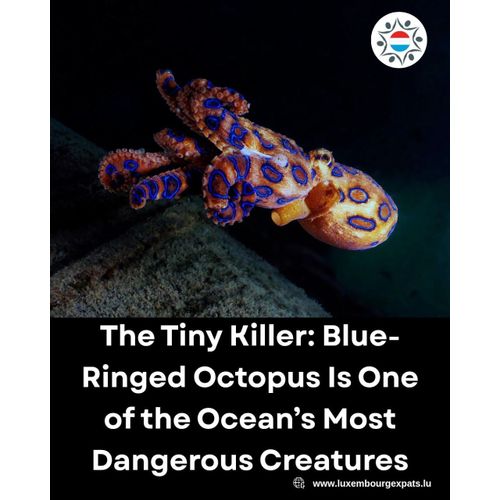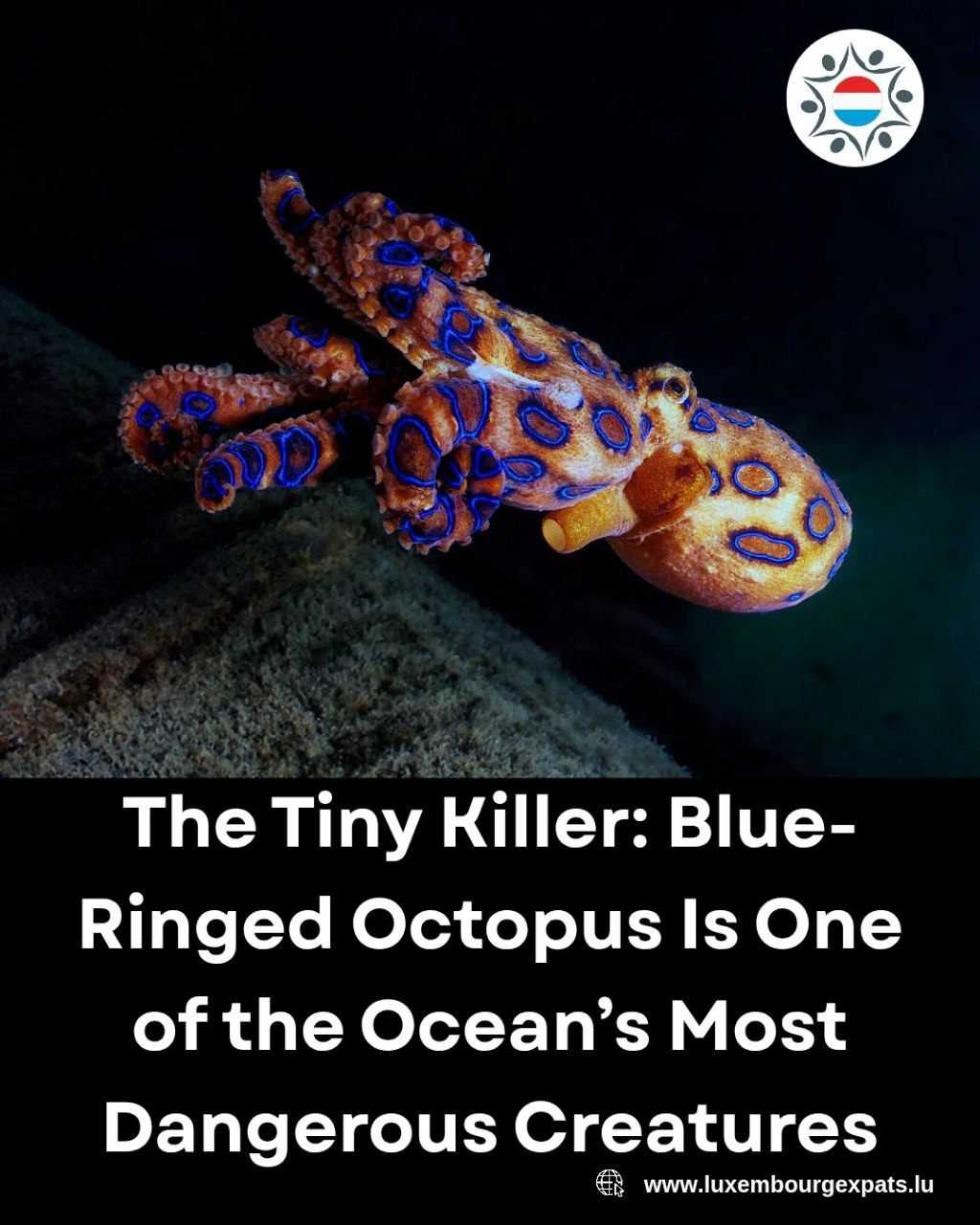The Tiny Killer: Why the Blue-Ringed Octopus Is One of the Ocean’s Most Dangerous Creatures
LuxembourgPosted on 27 November 2025 by TeamThe small, shimmering Blue‑ringed octopus might look harmless — or even beautiful — but it ranks among the most venomous sea creatures on Earth. Belonging to the genus Hapalochlaena, this octopus packs a punch through its production of a deadly neurotoxin called Tetrodotoxin (TTX).
TTX is terrifyingly potent. It’s estimated to be about 1,200 times more toxic than cyanide for humans, and the toxin is found throughout the octopus’s body thanks to symbiotic bacteria in its salivary glands. When injected — usually through a bite — TTX attacks the nervous system by blocking sodium channels, halting nerve signals, paralyzing muscles and often leading to respiratory failure or death.
What makes this danger all the more insidious is how subtle the octopus can be before striking. These creatures are tiny — often no bigger than a golf ball — and their bite can be almost painless. Many victims don’t even realise they’ve been envenomated until numbness sets in and breathing becomes impossible.
And to make matters worse: there is no known antidote. Treatment relies entirely on supportive measures, like artificial ventilation, to buy time until the toxin leaves the body.
Despite all that, the blue-ringed octopus isn’t aggressive by nature. It hunts small fish, shrimp and crabs — using its venom to paralyse prey — and hides in cracks or among coral. Its striking blue rings only appear when it feels threatened, serving as a warning to predators or unsuspecting humans who might pick it up.
Encounters with humans are rare, but when they do happen, the stakes are high. Since there’s no antivenom, the window for effective medical intervention is small. For these reasons, marine experts emphasise a simple rule: observe, don’t touch. Appreciating the beauty of marine life from a safe distance can save lives — yours and others.
Read More : discoverwildlife.com/animal-facts/marine-animals/blue-ringed-octopus?utm_source=
Join the community of your own - #1 home-grown LuxExpats app
SignUp Free : luxembourgexpats.lu
I am your contact
Team
Chat









